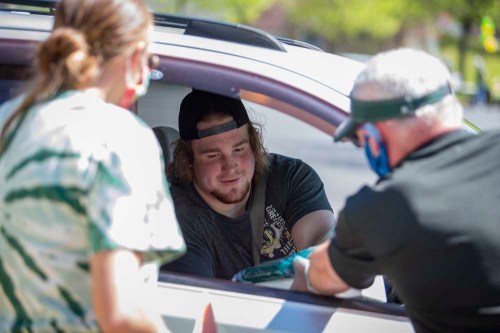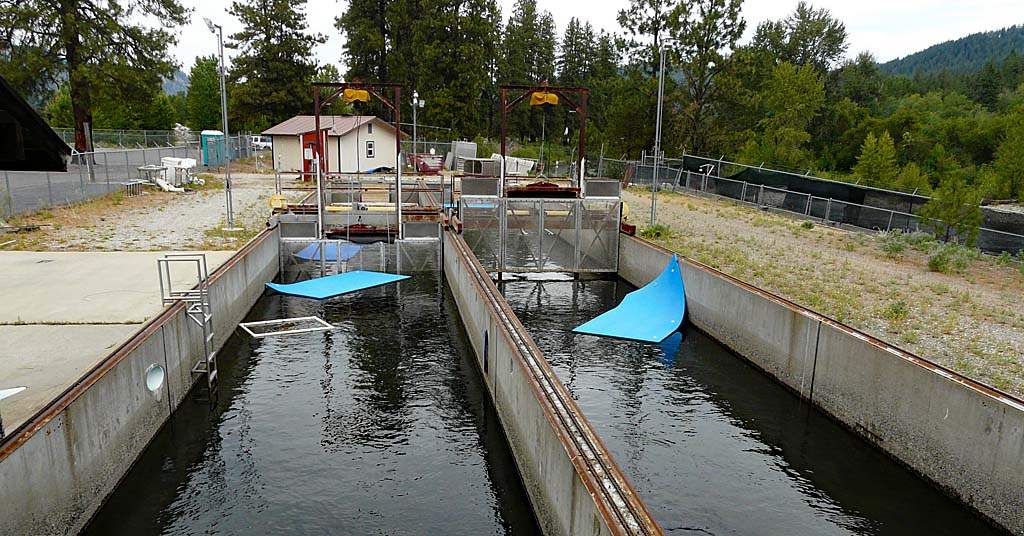Local districts outline their distance learning plans
Published 6:00 am Tuesday, May 5, 2020

- Pendleton High School senior Travis McGee picks up his cap and gown during a drive-thru event at the High School on Monday morning.
UMATILLA COUNTY — Once the governor announced on April 8 that school facilities would be closed for the rest of the school year to slow the spread of COVID-19, local districts started rolling out plans that contained the same basic elements — paper packets, online classes, laptop rentals for tech-deficient families and regular contact between teachers and students.
But there are slight variations between the plans, and with the help of a survey administered by the InterMountain Education Service District, the East Oregonian has compiled the basics of each plan along with comments from the region’s superintendents.
Trending
Hermiston focuses on technology access
With online school now heavily encouraged at the state level, Hermiston has focused on providing access to technology and the internet.
The district is offering up to three laptops for families with multiple children and officials also set up Wi-Fi hotspots in apartment complexes and trailer parks across town to ease the burden of accessing the internet.
In a press release, Superintendent Tricia Mooney called Hermiston’s distance learning plan a “blended strategy” that would combine multiple resources, including online material found on the district’s website and on platforms like iReady.
“Hermiston School District is working on its plan to accommodate all students,” she said in a statement. “Our teachers miss their students, and our focus is to make a connection with the students, realizing this is the new norm for the remainder of the school year.”
Pendleton aims to retain concepts learned in classrooms
Trending
Pendleton Administrator Matt Yoshioka put the goals of his district’s distance learning plan simply — to retain the concepts they learned when school facilities were still open while learning some new ones. For high school students, it was the same, but with the goal of setting them up for graduation.
The new structure of school varies from solely packet work for preschool students to mostly online for students in high school.
Yoshioka wrote that students are using programs like Google Classroom and Acellus based on the grade level.
Umatilla focuses on communication
Communication is a focus for Umatilla, which has high school teachers check in daily with their students through Google Meet.
The check-ins are referred to as “live times” by Superintendent Heidi Sipe, who said elementary school teachers get some flexibility on when to schedule live videos.
“During live classroom time, teachers answer student and parent questions, present new content, hold class meetings and engage with students,” she wrote. Each session is recorded and posted so students who cannot attend during the live time may still access the same material later.”
Teachers are also available by phone during regular school hours.
Like other districts, Umatilla is utilizing Google Classroom and paper packets.
Morrow County district distributes laptops
The Morrow County School District has distributed more than 1,000 laptops and is trying to make use of them.
Superintendent Dirk Dirksen said teachers were providing live lessons several times per day in combination with printed packets.
Morrow County is also reaching out to students through the internet or phone, and administrators like some of the early results.
“It has been very exciting when we receive updates from teachers that share their successes of which includes statements like, ‘I’ve had contact with all of my students’ or ‘22 out of 24 of my students were online participating in my Google Meeting today,’” he wrote.
Stanfield using Google Hub as main hub for online learning
All secondary students in Stanfield were already assigned laptops at the beginning of the year, and the district opened up technology rentals for K-5 students who needed them.
While Stanfield is using Google Classroom as its main hub for online learning to avoid confusing parents with multiple platforms, the district is also providing a paper and pencil version of all the learning material so students with internet connectivity issues still have access.
“It has been very frustrating to work through the different barriers to connectivity for some of our families, but we are continuing to try to partner with local providers to come up with a solution,” Superintendent Beth Burton wrote.
Teachers are required to reach out to students to track engagement, whether it’s through phone, email or video chat.
Athena-Weston utilizing a number of online platforms
While most districts are renting out Google’s Chromebook laptops for students without at-home technology, Athena-Weston is also distributing iPads and thumb drives for students without internet access.
Superintendent Larue Quaresma said teachers are utilizing all types of communication with students, and using programs like Google Classroom, Seesaw and Zoom for online learning.
Echo staying in touch with students
Whether it’s through Google Hangouts, Skype, Facetime, or more traditional methods, teachers in Echo are expected to check in with their students or their families once per week outside of their regular communication about learning material.
These check-ins are enabled by the fact that all secondary students already have laptops assigned to them and Echo has checked out another 100 to K-5 students.
Echo’s paper packets are complemented with online programs like Zoom, Google Classroom, Prodigy and Seesaw.
Ione dives headfirst into online school
Ione Community Charter School Principal Rollie Marshall wrote that every student in the district already had devices assigned to them this year, and Ione is diving headfirst into online school by using programs like Google Classroom, iReady, Acellus and Seesaw.
Despite all the technology, Ione is still utilizing paper packets for some students and using video chats and texting apps based on the age of students.
Helix establishes free wireless hotspot
As teachers acclimate to online teaching, Superintendent Darrick Cope said they are assigning paper packets as their primary curriculum while high school teachers are diving into Google Classroom, Acellus and Canvas.
Teachers are checking in with students at least once a week, and to facilitate lessons and chats, the district set up a free wireless hotspot at the school.
“Our goal is for students to get as much “learning” accomplished as possible, out of the next 6 weeks,” he wrote. “We all know it is a bad situation, but that doesn’t mean we blow off the remainder of the year.”
Ukiah struggles with online school
Situated in the remote southern end of Umatilla County and surrounded by national forest, Ukiah isn’t having an easy time with online school.
Ukiah School Principal Norma Barber said the district is offering technology when it can, but bandwidth is far from reliable in the area.
“Most students have asked for paper packets of materials,” she wrote. “With (U.S.) Forest Service employees working from home, too, internet is slower for most of our students than usual.”
Students drop off completed work in bins near the school’s north entrance, and without the benefit of video chat, some teachers are making house visits while observing social distancing guidelines.
Milton-Freewater
The Milton-Freewater Unified School District did not respond to the submitted questions.
Pilot Rock
The Pilot Rock School District did not respond to the submitted questions.









